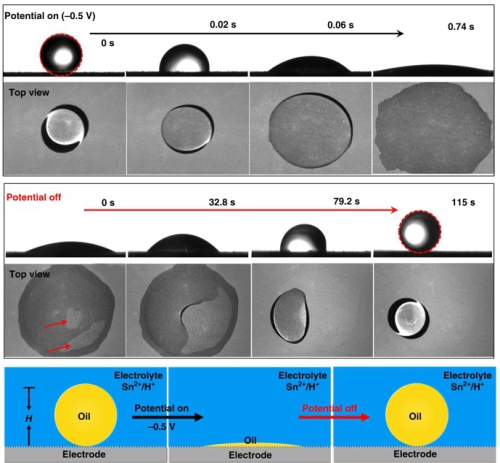Scientists have developed a solid surface that was capable of switching the underwater oil affinity were published in Nature Communications.
Most recently, a research team led by JIANG Lei from Technical Institute of Physics and Chemistry (TIPC) of the Chinese Academy of Science and LIU Huan from Beihang University developed the binary texture which can be in situ reverse its superwetting property between superoleophilicity and superoleophobicity.
Previously, in situ wetting change by electrowetting and electrochemical reduction/oxidation methods merely change the contact angles in negligible range, and can hardly reach the superwetting states.
In this work, tin layer can be electrodeposited on the copper surface by applying -0.5 V voltage, and reversibly removed by shut down the voltage. Consequently, the contact angle of the oil droplet change from 180° (superphobicity) - 0° (superphilicity) - 180° (superphobicity). The enrichment of tin atoms inhibits the hydrogen bonds that facilitating oil spreading. Meanwhile, copper atoms are easy to gather the hydroxyl group, leading oil repulsion by water penetration.
This study will pave an new path for constructing various applications, such as microfluidics, oil exploitation, smart antifogging and antifouling materials.
This work is supported by the National Natural Science Foundation of China and the Fundamental Research Funds for the Central Universities.
https://www.nature.com/articles/s41467-019-09201-1
Email: jianglei@mail.ipc.ac.cn

Figure. In situ reversible underwater superwetting transition by electrochemical atomic alternation (Image by JIANG Lei)
NEWS